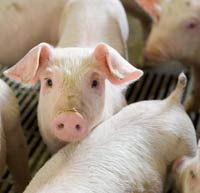Tips for finding and keeping staff for the pig industy

Employers that can find and retain the best staff will be the winners in the future, according to Harper Adam’s Richard Hooper speaking at BPEX’s annual conference.
He explained how staffing was the single most important asset in the UK, but with 41% of people working in agriculture over the age of 50 there was a massive need for new recruits in to agriculture.
There are two major problems, the first is filling vacancies and secondly retaining staff, he explained. “60% of vacancies are hard to fill in agriculture and even where vacancies have been filled there is a significant proportion of staff leaving in the first six months.”
How to become and employer of choice
|
|---|
And this is why it’s important to make the work place attractive and offer career opportunities. “Plenty of surveys show pay is not the most important thing an employee is looking for, but many felt being treated with respect, an interesting work environment, balance work and family were all more of a priority rather than pay.”
But it’s not difficult to create a good working environment. Mr Hooper recommended asking staff to evaluate the operation using 12 criteria. “It’s important when farmers are going to ask staff to evaluate they have to be prepared to act on what they learn.”
And the pig industry can become an employer of choice and is already part way there. “A move to batch farrowing is already creating a varied working environment and helps keeps the job interesting,” said Mr Hooper.
But keeping valued employees doesn’t just happen and having an induction programme can help. “The first six months is when staff are most likely to leave, which is why it is important to make the job interesting and varied. Most people in the work place are trying to do things well so reward them when they are. Performance management by sitting down and having one to ones and setting targets are also useful.”
Mr Hooper outlined 11 positive practices to help create a good work place environment.
|
|---|
‘Benefits possible with later gilt stimulation’
With 15-20% of gilts only producing one litter and 40-50% of sows culled before the third parity, many producers are losing money, said Government of South Australia’s pig researcher, Paul Hughes.
“At least three litters are required to achieve profit from a sow, but it seems the herd parity structure is out of balance. So it’s the problem between parity one and three that needs sorting.”
And one of the major factors Prof Hughes believed was contributing to the problem was the fact the modern pig was different to that produced 20 years ago. “Over the last 20 years we have produced a later maturing, heavier and leaner sow. The mature body size has increased by 50%, but with that gilt management hasn’t changed,” he said.
The pig is now a high ovulator, but this means the extra eggs that are ovulated are smaller and lower quality. “Because we have changed the animal we now need to think about how to manage it.”
“Gilt stimulation, for example, may have initially started at 23 week old 20 years ago, but now producers should think about starting gilt stimulation later at between 25-28 weeks old, because modern genotypes are just not ready for stimulation at this early age.”
Nutrition regimes also need to change to fit the modern genotype. “Previously low levels of nutrition may have been offered in the two weeks before mating, but if this was to happen now you would get smaller and poorer quality eggs.
“A high level of nutrition is a must two weeks before ovulation and in fact it’s important nutrition isn’t restricted from the point boar contact is started to the time gilts are mated,” stressed Prof Hughes.
He recommended for modern genotypes, to select gilts for breeding at 22-23 weeks at 100kgs. Secondly start daily boar contact at 25-28 weeks, mate gilts at 30-34 weeks and cull any unmated gilts at 34 weeks.

